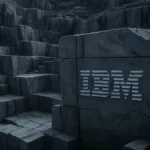It’s a bird, it’s a plane, it’s a…swarm of ping pong balls?
Researchers at the University of Colorado Boulder have developed tiny spherical robots that bear a striking resemblance to ping pong balls.
Taken individually, these diminutive bots aren’t very spectacular, but much like humans, they take on a new personality when in close proximity to several dozen of their peers.
Led by Assistant Professor Nikolaus Correll, computer scientists at CU created a swarm of 20 robots, each the size of a ping pong ball, which they call “droplets.” When the droplets swarm together, Correll said, they form a “liquid that thinks.” In the future, the bots that make up this smart liquid can work together to perform tasks, like containing an oil spill or building a space station.
The inspiration behind the herd of tiny, interconnected robots was “if one robot can accomplish a singular task, think how much more could be accomplished if you had hundreds of them.”
Correll plans to use the droplets to demonstrate self-assembly and swarm-intelligent behaviors such as pattern recognition, sensor-based motion and adaptive shape change.
These behaviors could then be transferred to large swarms for water- or air-based tasks. The researchers hope to create a design methodology for aggregating the droplets into more complex behaviors such as cleaning up toxic waste or assembling parts of a large space telescope or an aircraft.
“Every living organism is made from a swarm of collaborating cells,” said Correll. “Perhaps some day, our swarms will colonize space where they will assemble habitats and lush gardens for future space explorers.”






